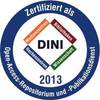Preview |
PDF, English
- main document
Download (43MB) | Terms of use |
Abstract
This thesis presents detailed magnetic investigations on metal-organic compounds hosting 4f lanthanide ions, as well as 3d and 5d transition metal ions. Using combined magnetic susceptibility and tunable high-frequency/high-field electron paramagnetic resonance spectroscopy studies, the microscopic spin Hamiltonian parameters are determined with a high degree of precision. The triply-capped, slightly distorted trigonal-prismatic ligand field of a muffin-shaped, mononuclear Er(III) complex is found to stabilise the mJ = ±9/2 Kramers doublet (KD) as the magnetic ground state. Furthermore, significant transverse components of the effective g-tensor account for the observed fast quantum tunnelling of the magnetisation (QTM) in zero magnetic field and indicate that slow relaxation at B = 0.1 T occurs through a thermally-activated process including the first excited KD at Δ = 37.4(2) K. The experimental findings are in close agreement with the results of ab-initio CASOCI calculations. In a series of pentagonal-bipyramidal, mononuclear ErIII complexes with similar equatorial but differing apical ligands, thermally-assisted QTM governs the different in-field relaxation dynamics. While all complexes exhibit QTM in the predominantly mJ = ±11/2 ground state KD, due to non-axial effective g-tensors, the incorporation of two charged axial ligands results in considerably low-lying excited energy states, thereby increasing the relaxation rate. The spectroscopic data are used to assess the validity of numerical crystal field analysis and ab-initio CASSCF calculations. For anionic complexes, the latter are demonstrated to overestimate the energy splittings. An interplay of the single-ion anisotropy and the antiferromagnetic 3d-4f exchange coupling is revealed in a family of VIII2 LnIII 2 complexes with butterfly architecture. The observed correlation indicates that 3d→4f charge transfer is the dominant exchange process and strongly depends on the anisotropic electron distribution of the lanthanide 4f orbitals. The importance of the 4f anisotropy shape also manifests in the magnetic relaxation dynamics. Antiferromagnetic intermolecular interactions in a ReIV-based molecular complex are found to lead to the formation of spin chains. Analysis of the magnetic data shows that an isotropic Heisenberg-chain model with local single-ion anisotropy fails to describe the observed magnetic behaviour. Instead, the diffuse nature of the involved 5d orbitals gives rise to a more complex exchange mechanism.
| Document type: | Dissertation |
|---|---|
| Supervisor: | Klingeler, Prof. Dr. Rüdiger |
| Place of Publication: | Heidelberg |
| Date of thesis defense: | 23 October 2025 |
| Date Deposited: | 06 Nov 2025 12:49 |
| Date: | 2025 |
| Faculties / Institutes: | The Faculty of Physics and Astronomy > Kirchhoff Institute for Physics |
| DDC-classification: | 530 Physics |









